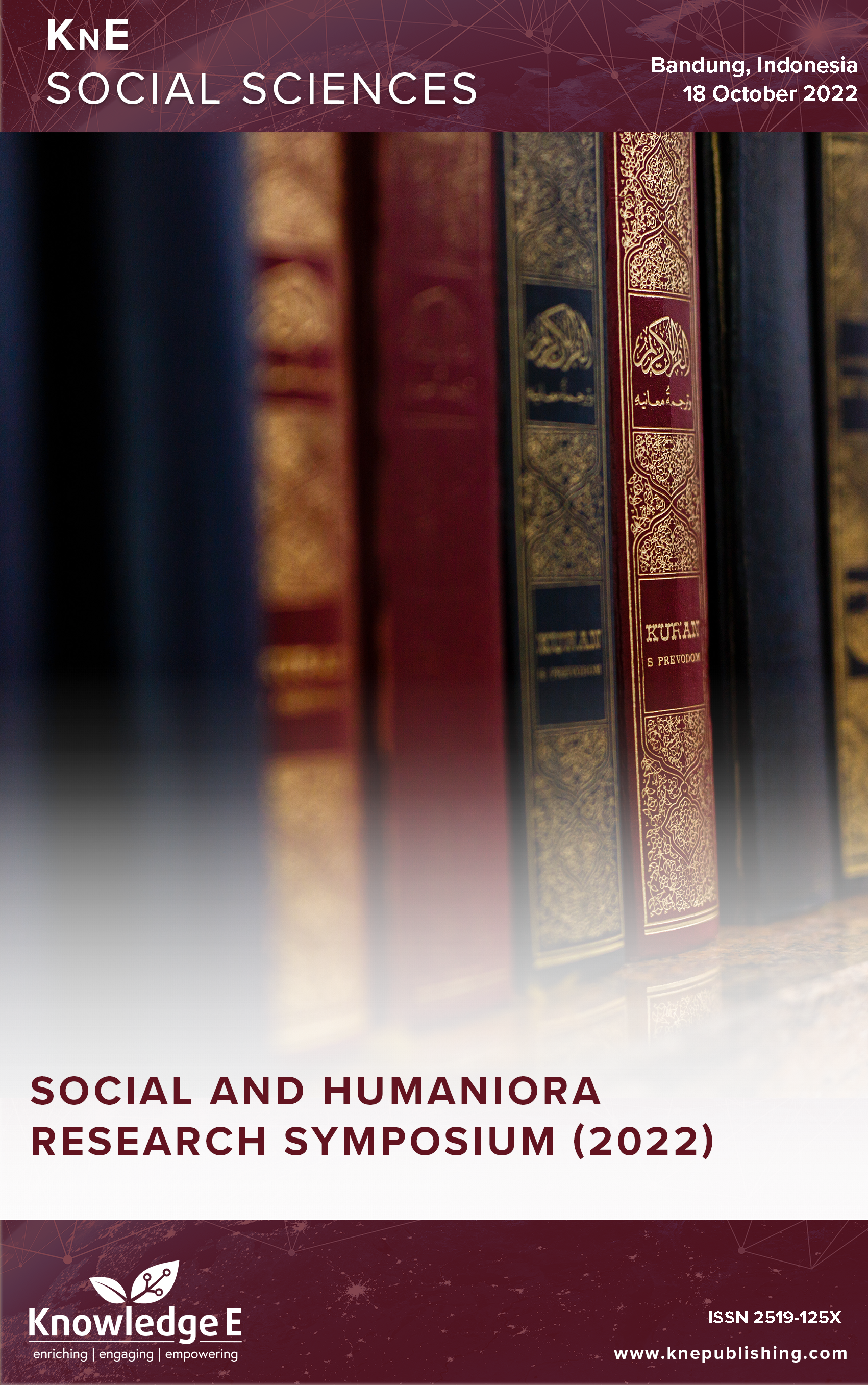The Art of Learning and Communication for Elementary School
DOI:
https://doi.org/10.18502/kss.v8i18.14359Abstract
Children deserve the best education. They need to be protected, and educated properly. Education is a shared responsibility of parents, teachers, and society. The community can play a role in improving the quality of education for children. The purpose of this study was to analyze teacher communication with children in art learning and to analyze development of local creativity in art learning of elementary school at Jatisura Majalengka West Java Province Indonesia. This research was conducted in Jatisla Village, Jatiwangi District, Majalengka, West Java, Indonesia. The research method used is ethnographic communication by tracing communication patterns built from the collaborative interaction of the community, teachers, and school children. Informants are determined through sample techniques using purposive sampling. This research is expected to contribute to children’s art learning in schools. The data collection technique used is to make observations and interviews with informants, teachers, and art community activists. The research phase consisted of mapping the role of the creative community, analyzing the role of teachers in learning, and analyzing regional creativity that developed in learning. In conclusion, communication learning process in the classroom can be conveyed in various forms and communication techniques. Communication in the teaching and learning process at SD Jatisura have been doing through communication ethnography method. Interactive communication allows sharing of thoughts, ideas, feelings with one another in a way that can be understood, so that each action of communication needs and communication goals can be achieved. Communication between teachers and students is attractive and transactional, making music learning situations more effective and enjoyable. The role of the Jati Wangi Art Factory as a community, especially in the art learning of students is very large. In collaboration with teachers, we teach children how to play music using clay musical instruments, which is one of the advantages of Jatisla village.
Keywords: collaboration, learning communication, community
References
[2] Pilotti MA, El-Moussa OJ, Abdelsalam HM. Measuring the impact of the pandemic on female and male students’ learning in a society in transition: A must for sustainable education. Sustainability (Basel). 2022;14(6):3148.
[3] Triwardhani IJ, Hasbiansyah H, Maryani A, Lilis D. “MODEL PENDIDIKAN INKLUSIF UNTUK PENGEMBANGAN KAPASITAS KEWIRAUSAHAAN MASYARAKAT MISKIN Kasus: Pendidikan Kewirausahaan untuk Anak pada Masyarakat Nelayan,” Nov. 2016. Accessed: Jun. 15, 2023. [Online]. Available: http://repository.unisba.ac.id/handle/123456789/27801
[4] Šobáňová P, Jiroutová J. Connecting art education learning tasks with the artistic field: The factor of quality in art lessons. Cent Educ Policy Stud J. 2020;10(4):33–54.
[5] Metzl ES. Art is fun, art is serious business, and everything in between: Learning from art therapy research and practice with children and teens. Children (Basel). 2022 Aug;9(9):1320.
[6] Desmet OA, Roberts AM. Teaching for positive and transformational creativity through service learning. Educ Sci (Basel). 2022 Mar;12(4):234.
[7] Apostu LI, Apalaghie D. 9. Teacher training in arts education in France (contemporary challenges in arts education). Rev Artist Educ. 2022;24(1):308–317.
[8] Archino S, Lanier M, McClain R. “Reframing the arts within the liberal arts community.” Artivate A J. Entrep. Arts. 2020;9(2). https://doi.org/10.34053/artivate.9.2.138
[9] Florian L, Beaton M. Inclusive pedagogy in action: Getting it right for every child. Int J Incl Educ. 2018 Aug;22(8):870–884.
[10] Fluijt D, Bakker C, Struyf E. Team-reflection: The missing link in co-teaching teams. Eur J Spec Needs Educ. 2016 Apr;31(2):187–201.
[11] Strogilos V, Stefanidis A, Tragoulia E. Co-teachers’ attitudes towards planning and instructional activities for students with disabilities. Eur J Spec Needs Educ. 2016 Jul;31(3):344–359.
[12] Chandran R, Ariffin MYM. “Beyond arbitrary labels: Understanding ethnic identity development among Chindians.” SEARCH J Media Commun Res. 2015;7(2).
[13] Morgan S, Pullon S, McKinlay E. Observation of interprofessional collaborative practice in primary care teams: An integrative literature review. Int J Nurs Stud. 2015 Jul;52(7):1217–1230.
[14] Fuglsang L. Innovation and the creative process: Towards innovation with care. 2008.
[15] Johnson DW, Johnson RT, Smith K. The state of cooperative learning in postsecondary and professional settings. Educ Psychol Rev. 2007 Mar;19(1):15–29.
[16] Terenzini PT, Cabrera AF, Colbeck CL, Bjorklund SA, Parente JM. Racial and ethnic diversity in the classroom: Does it promote student learning? J Higher Educ. 2001 Sep;72(5):509–531.
[17] Tinto V. Classrooms as communities: Exploring the educational character of student persistence. J Higher Educ. 1997 Nov;68(6):599–623.
[18] Astin AW. An empirical typology of college students. J Coll Student Dev. 1993;34:36– 46.
[19] Hamilton AF. Emulation and mimicry for social interaction: A theoretical approach to imitation in autism. Q J Exp Psychol (Hove). 2008 Jan;61(1):101–115.
[20] Brinia V, Selimi P, Dimos A, Kondea A. The impact of communication on the effectiveness of educational organizations. Educ Sci (Basel). 2022 Feb;12(3):170.
[21] Washington WR. Collaborative practices between general education and special collaborative practices between general education and special education teachersin middle school inclusion classrooms education teachers in middle school inclusion classrooms. Walden University ProQuest Dissertations Publishing; 2022.
[22] Berlo DK. The process of communication: An introduction to theory and practice, no. v. 10. Holt, Rinehart and Winston, 1960.
[23] Mottet VP, Richmond, McCroskey JC. (Eds.) Handbook of instructional communication: Rhetorical and relational perspectives (pp. 3-32).” Boston: Allyn & Bacon, 2006.
[24] Goggins J, Hajdukiewicz M. The role of community-engaged learning in engineering education for sustainable development. Sustainability (Basel). 2022 Jul;14(13):8208.

